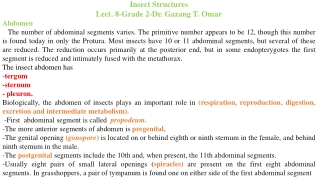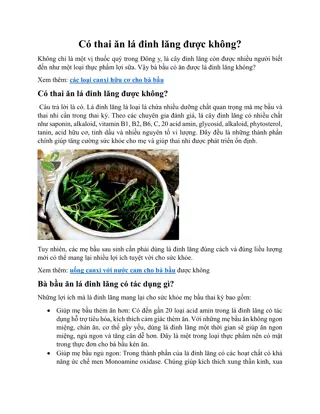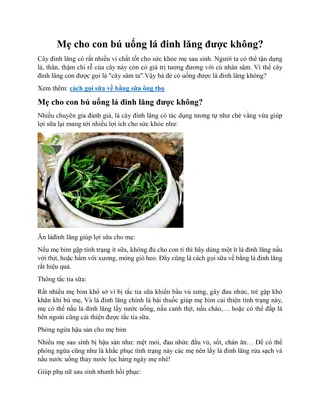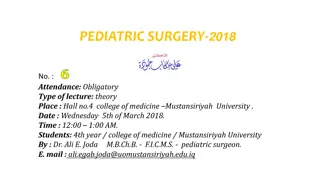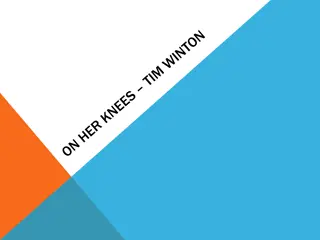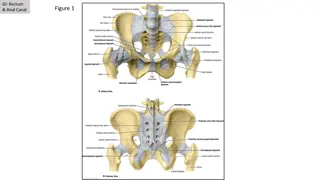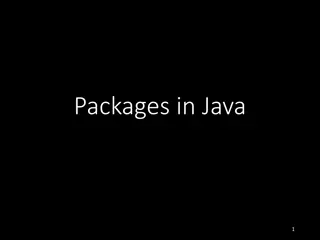
Algorithmic Languages Analysis and Compiler Design Course
Explore the nuances of algorithmic languages, compiler design, and practical implementation through this comprehensive course. From associating tasks with suitable languages to designing a custom compiler, delve into the world of programming language analysis. Benefit from topics like translator design, classification of languages, and build your own compiler with practical guidance. Join now to enhance your proficiency in algorithmic languages and compiler construction.
Download Presentation

Please find below an Image/Link to download the presentation.
The content on the website is provided AS IS for your information and personal use only. It may not be sold, licensed, or shared on other websites without obtaining consent from the author. If you encounter any issues during the download, it is possible that the publisher has removed the file from their server.
You are allowed to download the files provided on this website for personal or commercial use, subject to the condition that they are used lawfully. All files are the property of their respective owners.
The content on the website is provided AS IS for your information and personal use only. It may not be sold, licensed, or shared on other websites without obtaining consent from the author.
E N D
Presentation Transcript
Analysis of Programming Language Vladimir Viies viis@ati.ttu.ee, Lembit J rim gi lembit.jyrimagi@gmail.com Tallinna Tehnika likool 2015
Subject goals A student has to be able: - to associate tasks with a suitable algorithmic language; -to design a special purpose algorithmic language and create a compiler for it; 3
Subject contents I Classification of algorithmic languages. Universal and specific languages. Comparision of the possibilities of data types, sentences and intramodular data exchange in different languages (FORTRAN , PL/1, PASCAL,Assembler etc.).Assembler. Translators, their components and work principles. Art of translator design. 4
Subject contents II LET'S BUILD A COMPILER! By Jack W. Crenshaw, Ph.D. This file contains all of the installments of Jack Crenshaw's tutorial on compiler construction. The intended audience is those folks who are not computer scientists, but who enjoy computing and have always wanted to know how compilers work. A lot of compiler theory has been left out, but the practical issues are covered. By the time you have completed the series, you should be able to design and build your own working compiler. It will not be the world's best, nor will it put out incredibly tight code. Your product will probably never put Borland or MicroSoft out of business. But it will work, and it will be yours http://groups.engin.umd.umich.edu/CIS/course.des/cis400/maxim/ 5
Course structure I I moodul: Practice(translator design) II moodul: Seminars(Comparision of the possibilities in different languages, include essay ) III moodul:Homework (create a translator ) 6
Course structure II 1. 03.09.2015 Introduction, some examples of what we're going to do - short lecture 2. 10.09.2015 Regular Languages, Regular Expressions, Flex 4. 3. 17.09.2015 Context Free Grammar, Bison, Postfix/Infix Calculator 24.09.2015 Practice Task 1 5. 01.10.2015 Abstract Syntax Tree, General Purpose Language 6. 08.10.2015 General Purpose Language, cont 7. 15.10.2015 Practice Task 2 8. 22.10.2015 Evolution of Programming Languages-lecture+ exercise+essay explanation 9. 29.10.2015 Test 10. 05.11.2015 PICkit/TI Launchpad Assembler 11. 12.11.2015 PIC/TI Specific Language 12. 19.11.2015 ANTLR (guest lecturer - HK) 13. 26.11.2015 ANTLR + custom CPU assembler (guest lecturer - HK / KJ) 14. 03.12.2015 Seminar 15. 10.12.2015 Seminar 16. 17.12.2015 Exam 7
POINTS I practice seminar(inc.essay) homework(transl.) written examination(inc.test 10) http://www.tud.ttu.ee/im/Vladimir.Viies/IAG0450.html 8
POINTS II max Practice x 10 ----------25p(10 + 15) Seminar x 2 -----------10p(inc. essay) Homework 1 -----------15p(translater) Test ----------------------- 20p Written examination--50p (include test max10p) Permission to examination(30p) 9
Language components 1.Alphabet(Latin letters, Arabic numerals and special symbols); L={ A , a ... Z , z } S={ < , > ... := , # } N={ 0 , 1 ... 8 , 9 } A={L,N,S} 2. Number of lexical words; 3. Spelling Rules; 4. Syntax rules. 10
FORTRAN, FORTRAN IV, FORTRAN 77, FORTRAN 2008..... IComponents *Main PROGRAM *Sub-prougram SUBROUTINE Expression-FUNCTIONE *BLOCK DATA (COMMON) IIPhrases *Activity phrases *Descriptions phrases 11
: for(int i=1; i<=n; i++) , expression (initial value) for date type ( logical expression expression (final value) ; ; , sentence (reapeat) ; ; ) 12
TRANSLATION VS. INTERPRETATION I Translation: program written for level n machine translated to level 1 machine Advantages: -statements decoded ONCE - efficient execution Disadvantages: -space consumption Interpretation: program written for level n + 1 is executed on level n machine Advantages: -space conservation Disadvantages: -execution 14
TRANSLATION VS. INTERPRETATION II TRANSLATORS Compiler: high level-> machine Assembler: one to one, assembly -> machine Loader: relocatable version of machine code - > machine code Link editor: combines collections of relocatable programs -> single relocatable machine program Pre-processor: extended language -> standard language 15
TRANSLATION VS. INTERPRETATION III INTERPRETER Fetch op code De-code op code Fetch necessary operands Branch to primitive (OPk) Then repeat until the end of the program 16
TRANSLATION VS. INTERPRETATION II Compiler organization phases Lexical analysis Syntactical analysis Semantic analysis Optimization Code generation 17
TRANSLATION VS. INTERPRETATION III Expression ::= term | expression addop term Term ::= operand | term mulop operand Operand ::= a | b | c Addop ::= + | - Mulop ::= * | / Natural ::= digit Integer ::= [ +|- ] natural Digit ::= 0 | 1 | 2 | 3 | 4 | Top down parsing: a*b+c 18
TRANSLATION VS. INTERPRETATION III Lexical analyzer (or scanner") Looks for variables and special words Creates spaces in symbol table "Lex" is a UNIX tool, (scanner) Syntactic analyzer Parser, (generates parsing tree) In UNIX, "yacc" takes output from "lex" for generating a parse tree Optimizer Performs sub-expression elimination (i.e. in expression: a[i+j] = b[i+j] * c[i+j], the (i+j) will be calculated to a new variable, d, such that: a[d] = b[d] * c[d]) Strength reduction (i.e. L = Length(str1 || str2) is changed to the simpler to compute expression L = Length(str1) || Length(str2)) Loop optimization 19
Home task Translator Choose any procedural or object oriented programming language (except C) or make up your own syntax. Define vocabulary for the language using Flex (or any alternative) Define grammar rules for the chosen language using GNU Bison (or any alternative). Example on C can be seen here: http://www.lysator.liu.se/c/ANSI-C-grammar-y.html Write enough functionality to be able to run one of the final tasks. To demostrate the newly created language, realize one of the given algorithms: For maximum points: Bubblesort 99-bottles-of-beer http://www.99-bottles-of-beer.net/ 20
SQL Translator Make up a language for specific area or task of your choice. An example and a possible choice is a language for managing library. Create a SQL translator using GNU Bison (or any alternative) to translate your made up language to SQL. Write a simple database interface for executing the translated SQL queries in a database. Set up a simple database to demostrate inserting and quering data in the made up language
Language design I A: Focus on one well known feature at a time, (could be basic as data Examine many alternative features designed by others & choose the best, rejecting those that are inconsisten B: Choose specific application (logic, financial, etc.) Keep design committee small Choose precise design goals type) 22
Language design II Release versions to small sets of interested people Revise language definition Attempt to build & write formal language definition- semantics Revise language definition Produce clear and concise manual Provide "production quality" compiler and wide distribution Write primers explaining language 23
Criteria for Language ( seminar) Criteria for Language Design Evaluation 1. efficiency (translation and execution) 2. simplicity (readability and writability) 3. orthogonality 4. definiteness (syntax and semantics) 5. reliability 6. program verification (correctness) 7. abstraction facilities (data and procedural) 8. portability 24
Significant Language Features I Simple to learn Machine Independent More natural ways to express mathematical functions Problem orientated language Remains close to and exploits the available hardware Efficient execution Ability to control storage allocation More freedom in code layout 27
Significant Language Features ( www.fortran.com) Some of the more significant features of the language are as listed below: Simple to learn - when FORTRAN was design one of the objectives was to write a language that was easy to learn and understand. Machine Independent - allows for easy transportation of a program from one machine to another. More natural ways to express mathematical functions - FORTRAN permits even severely complex mathematical functions to be expressed similarly to regular algebraic notation. Problem orientated language Remains close to and exploits the available hardware Efficient execution - there is only an approximate 20% decrease in efficiency as compared to assembly/machine code. Ability to control storage allocation -programmers were able to easily control the allocation of storage (although this is considered to be a dangerous practice today, it was quite important some time ago due to limited memory. More freedom in code layout - unlike assembly/machine language, code does not need to be laid out in rigidly defined columns, (though it still must remain within the parameters of the FORTRAN source code form). 28
Significant Language Features II Loops Input from the keyboard Menu Driven Applications System Commands Structured Programming Subroutines Built-In Functions User-Defined Functions Arrays, sorting, and searches 29
What is an "Algol-like" language? Algorithmic language for describing Processes Imperative (most computation work done in assignment statements) Block & procedure Lexical scope C Algol lexical scope 30
PSEUDO LANGUAGE I LANGUAGE USE ALLOWED x = y; assignment x = x y; binary x = x; unary x=x+1 x= succ(x) pred (x) simplification 31
PSEUDO LANGUAGE II GOTO M BR M JMP M IF x y THEN GOTO M x,y {A} A- number of integers CMP x,y B ii M ii (NE,EQ,GT,LT,GE,LE) specifications CMPB X,Y X,Y {C} C-amount of symbols of the alphabet B cc M cc (NE,EQ,..........) specifications 32
PSEUDO LANGUAGE III If you compare the form of the IF statement above with the as- sembler code that must be produced, you can see that there are certain actions associated with each of the keywords in the statement: IF: First, get the condition and issue the code for it. Then, create a unique label and emit a branch if false. ENDIF: Emit the label. These actions can be shown very concisely if we write the syntax this way: IF <condition> { Condition; L = NewLabel; Emit(Branch False to L); } <block> ENDIF { PostLabel(L) } 33
PSEUDO LANGUAGE IV EXAMPLE 1(Pascal) IF (condition) THEN sentence1; ELSE; sentence2; if: if !(condition) then goto else; then: sentence1; goto endif; endif: the program will continue 34
PSEUDO LANGUAGE V EXAMLE 2(C) DO sentence1; sentence2;....sentenceN; WHILE expression ; do : sentence1; sentence2;..sentenceN; check : expression computing; while : if not expression goto do; 35
If-then/else or case design issues What type of selector expression? What types of case labels? Can you branch to case labels from outside? Mutually exclusive labels? Exhaustive label case coverage? 36
Loop design issues What type of values may loop variable assume? Complexity of loop expression? How often is loop variable checked against final value? Can loop variable be assignment inside loop body? When evaluate stopping expression? Transfer permitted outside loop? Scope of loop variable? 37
Exercise 1 Your assignment are to select 3 of the languages (set of languages) and evaluate its standard implementation. You are to assign the language a grade (1 through 8) for each criterion point listed below and to provide written justification for your rating. This set of languages is to include at least the following: Fortran, Cobol, PL/I, Pascal, C, C++, Ada, Lisp, Smalltalk, Basic, Modula-2, Algol, APL, Snobol, Icon, Prolog, Simula, Scheme, Eifel, Oberon, Visual Basic, Visual C++, Perl, Java, Delphi, HTML, ... 38
Excercise 2 LOOP: DO WHILE (FLAG = 0); PUT SKIP DATA('HELLO WORLD!'); END LOOP; END HELLO; ******Ouput for Hellow World WRITE(6,*)'Hello world' STOP END class HelloWorld { public static void main(String args[]) { System.out.println("Hello world!"); }} #include<stdio.h> main() { printf("Hello World"); } 39
Test task example Write an interpreter for the calculator language defined below. You may assume that there are no operator precedence rules if you wish. expression::= operand [ operator operand]. operand ::= 0 | 1 | 2 | 3 | 4 | 5 | 6 | 7 | 8 | 9 operator ::= + | - | * | / language you wish to do this . You will need to turn in a clearly commented source listing of your program. You may use any 40
Tname, et lbisid kursuse! J tka ainete omandamist tarkvaraainete plokist! Thanks for Your attention! Tutvu ainetega Infotehnoloogia teaduskonna ppematerjalide kodulehel Look at www.tud.ttu.ee

